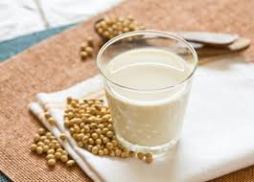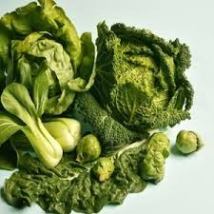It was National Healthy Bones Week on August 4th-10th 2013, a week that aims to increase the awareness of the role calcium rich foods, predominantly dairy foods play in the development of strong healthy bones.
Now personally I love dairy foods. I enjoy milk for recovery after training, enjoy the satiating qualities that yoghurts poses for a PM snack (the full fat type) and can’t go past a lovely cheese platter over a catch up with friends. However, many do not share this same love.
Eight out of ten adults do not meet the recommended number of servings of dairy (or dairy alternatives such as soy products) a day as outlined in our Australian Dietary Guidelines.
I am very much aware that many people need to avoid or limit dairy foods due to intolerances or personal dietary preferences. Others just do not share the same view when it comes to the health benefits of dairy foods. The many reasons that people may or may not include dairy in their diet are very contracting which makes it very confusing for people trying to eat for health.
Because of this, I asked friends and family via social media what they wanted to know about dairy foods and bone health and why some may avoid this whole food group. Many wanted to know how they can get enough calcium through non-dairy sources, some wanted to know whether full fat or low fat was best and some were avoiding because of a fear of weight gain.
This led me to explore some of the views and evidence of the pro-dairy faction and have a look at other science-based views and most importantly determine how everyone can get enough calcium in their diets.
But let’s not forget that this all came about because of National Healthy Bones Week and calcium is just one piece of the puzzle.
The healthy bones puzzle
Building healthy bones is an area of our health that isn’t talked about a lot, especially during the crucial ages for bone building (our teenage years) when focus may be on eating for weight versus eating for health and wellness.
It is important to piece each part of the puzzle together to build healthy bones. This puzzle involves three main pieces including adequate dietary calcium intake, adequate vitamin D (which many of us are deficient in) mainly from sunshine and regular bone strengthening exercise such as jogging, brisk walking, balance exercises and resistance exercise.
The role of calcium
Most people know that calcium is important to help build healthy teeth and bones. This occurs when the calcium deposits as a crystal onto our bones to give them their hard strength. Our body also requires calcium to help transmit nerves, regulate the hearts rhythm and assist with blood clotting. But remember, our bodies can't use calcium without adequate vitamin D.
Our body gets calcium through the foods that we eat. It can also borrow calcium from our bones when our blood levels start to drop to low. If this is not replaced our bones will lose their strength. So it’s pretty safe to say we need calcium in our diets!
While no one is questioning the important role of lifelong calcium intake for the health of our bones, the debate comes down to just how much calcium do we really need and what are the best sources of calcium in our diets?
When we sort through the opinion and look closely at the evidence, there’s no ‘final answer’ on how much we need. But here is what we know about calcium, food sources and what our current recommendations are.
How much calcium do we need?
The Australian recommendations suggest that children require 500mg-1000mg, teens require 1300mg and adults require 1000mg-1300mg of calcium a day depending on their age and gender.
How to meet these recommendations
The new Australian Dietary Guidelines recommend 2 ½ - 4 serves of dairy foods a day for adults (depending on their age) to help meet calcium requirements and gain additional health benefits from dairy foods.
A serve of dairy contains approximately 350-450mg of calcium per serve with one serve equating to:
- 250ml of cows milk
- 250ml of soy milk (with at least 100mg of added calcium per 100ml)
- 200g of yoghurt
- ½ a cup of ricotta cheese, or
- 40g of cheese.
The list is endless when we think about how we can include these foods in our diets. Think:
- milk after exercise
- Greek yoghurt on curries
- ricotta cheese in salads, and
- plain yoghurt with fruit for dessert.
The Great Dairy Debate
Although the new Australian Dietary Guidelines are based on scientific evidence, some groups question if we really need this much calcium, particularly from dairy foods for bone health. However, contradictory studies only show correlation, not conclusive evidence that would alter the guidelines.




